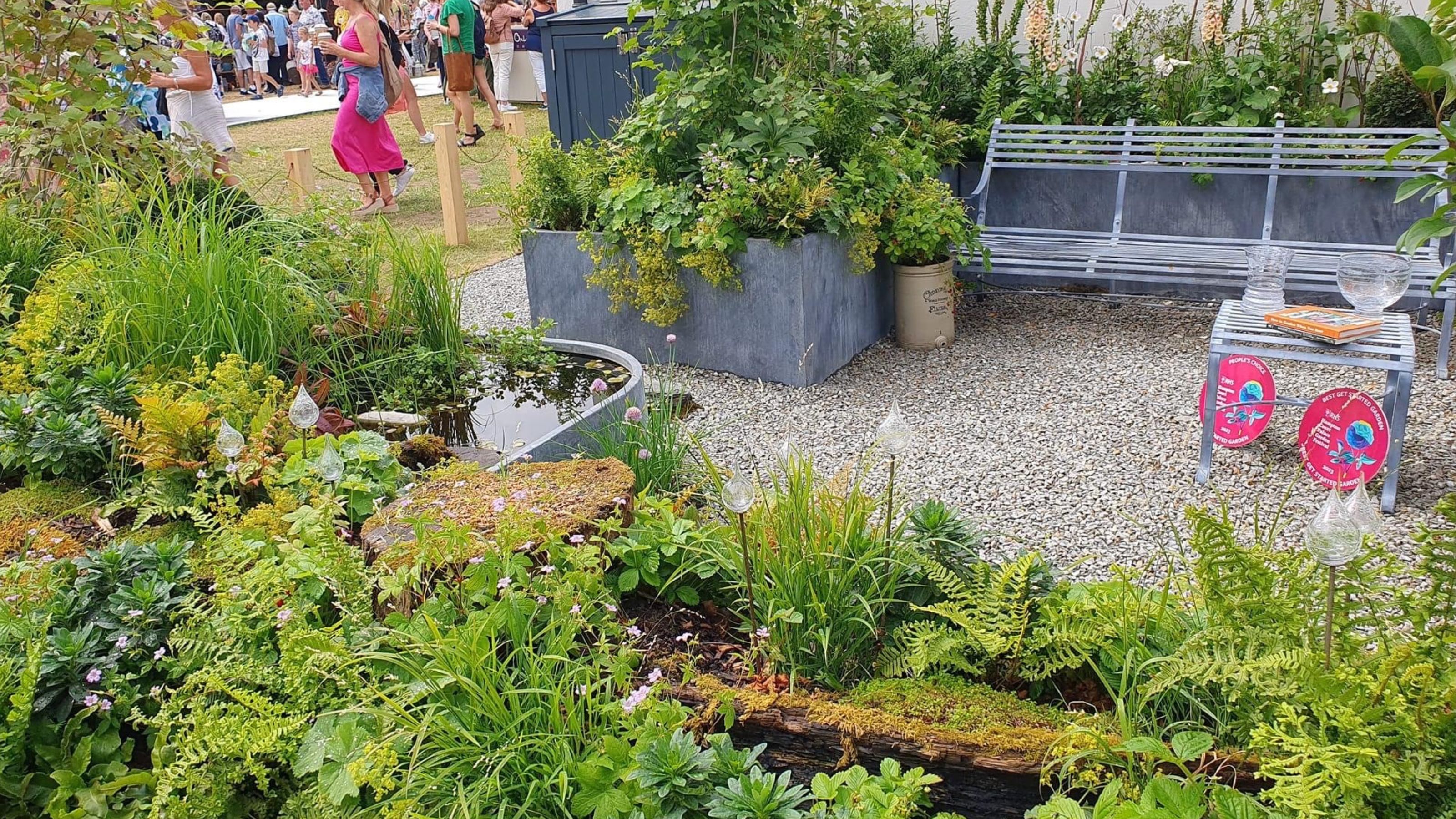Why this German gardening technique is set to become the hot new DIY trend
Hugelkultur isn't just a cheap option for gardeners – it's beautiful, too!


Hugelkultur is fast becoming one of the hottest garden ideas on the plot, and little wonder: the German gardening technique was front and centre in Zoe Claymore's gold medal-winning 'Renter's Retreat' at this year's Hampton Court Palace Garden Festival.
'This permaculture growing technique has been around for a very long time,' says Zoe, explaining that she felt it was important to showcase the garden trend for exactly that very reason.
'It's basically another way of doing raised gardening without buying a raised garden bed, so it's a nice and low cost option for people. And it doesn't just look beautiful; you can actually have a lot of fun doing it, too!'

Zoe's hugelkultur mound (which can be seen mid-build in the photo above) has since inspired countless others to give the German gardening technique a go for themselves – including garden designer Matthew Childs.
'As gardeners we should be looking to minimise sending waste off site or burning it and this is true of both hard and soft materials,' he says.
'This would be a great way to use up vegetative garden waste such as tree and shrub prunings or stripped turf. In fact, I can’t wait to give it a go!'
Let's talk hugelkultur
Derived from the German words 'hugel', meaning mound or hill, and 'kultur', meaning culture, hugelkultur is all about creating raised garden beds... albeit with a difference.
Sign up to our newsletter for style inspiration, real homes, project and garden advice and shopping know-how
Rather than using wooden planks to shape out a formal bed, hugelkultur is all about using organic materials (such as logs, branches, leaves, and compost) to create a bed that acts as a self-sustainable ecosystems.
A post shared by Zoe Claymore (@zoe_claymore)
A photo posted by on
'Hugelkultur provides a wealth of benefits for your plants and the environment,' says Lina Cowley, senior editor at Trimmed Roots.
Benefits such as, say, the fact that a well-installed hugelkultur mound can help you to save water, improve soil fertility, and extend your growing season, to name just three.
'The triumph of Zoe Claymore's installation has highlighted the potential of hugelkultur as a tool for crafting resourceful and productive green spaces, even within restricted environments,' adds Lina.
'And it's also served as a convincing showcase of sustainable gardening innovation.'
No small thing, when the likes of Alan Titchmarsh are out there slapping down the rewilding movement at every turn...
What you will need:
If you are keen to give your own garden a little dose of hugelkultur, you will need to source the following:
- Decaying wood (you can use logs and branches, or reclaimed pallets if you prefer)
- Grass clippings
- Wood chips
- Fallen leaves
- Nutrient-rich soil
- Preferred vegetables, herbs, or flowers
How to make your own hugelkultur

It's actually incredibly simple to make your own hugelkultur mound – although 'the only caveat is is it really works best over like three or four years,' says Zoe.
'You have to build put the big logs down, cover them with the small medium, and then you put a lot of compost over the top, which eventually rots down and creates a very rich growing medium.'
'In the first year or so, there could be quite a lot of absorption of nitrogen, so you have just got to be think about what you're planting,' she adds.
1. Lay down your logs
As Zoe has already explained, you will need to start your hugelkultur by laying down larger items, made from wood like logs and branches.
'On top of this, you will then place your smaller materials, such as leaves and grass clippings,' says Nick Wood at GardeningExpress.co.uk.
'Make sure the cavities are filled with a balanced mix of wood chips, leaves, and soil – a blend designed to optimally nurture the plant life,' adds Lina.
2. Get planting
In the first year or so, you will want to make sure that you are planting edimentals and flowers with shallow root systems, to avoid nitrogen depletion that can be caused by the wood before it starts to rot.
'Make sure you leave appropriate spacing for growth,' says Lina.
'I’d recommend planting vegetables that grow above the soil instead of root varieties, such as brassicas, cucumbers, and bell peppers, so you don’t have to dig up the layers when it comes to harvesting,' adds Nick.
3. Mulch with organic material
Make sure that you mulch with leaves, grass clippings, straw, rotting hay, composting wood chips after you've finished planting.
This will help you to inject some additional organic material to the bed.
A post shared by Zoe Claymore (@zoe_claymore)
A photo posted by on
'Regular watering, too, is essential for maintaining the health and vibrancy of the garden,' says Lina.
Over time, you will find that your hugelkultur mound requires less and less watering.
'It becomes this like amazing soil, basically like a water sponge, and it absorbs all of that water, holds it and releases it over a slow amount of time,' says Zoe, suggesting that the hugelkultur mound is the ultimate when it comes to slow watering hacks.
If you'll excuse us, then, we're off to source a few old logs. See you in the garden, OK?
What is the hugelkultur technique?
Hugelkultur, as demonstrated by Zoe Claymore and The Wildlife Trust at this year's Hampton Court Palace Garden Festival, is a sustainable (and cheap) way to build a raised garden bed using decaying wood and plant debris. This provides a rich growing medium for plants, not to mention helps to save on water – and, when done well, it looks truly beautiful, too.
What are the benefits of hugelkultur?
'Hugelkultur beds are incredibly efficient when it comes to water retention,' says Lina. 'The logs and organic matter within the beds act like sponges, soaking up water and slowly releasing it to the plants. This means less watering for you and healthier, more resilient plants.'
Hugelkultur beds don't just help gardeners to save water, though: they also boost soil fertility, thanks to organic materials breaking down over time and releasing nutrients into the soil. And this decomposition process within the beds also generates heat, keeping the soil warmer for longer periods.
'This allows you to start planting earlier in the spring and continue growing later into the fall,' adds Lina. 'Say goodbye to short growing seasons and embrace a longer and more productive gardening experience.'
How big does a hugelkultur have to be?
A hugelkultur is 'something that can be done at a small scale,' says Zoe, 'which means you can customise it to fit your garden.'
She adds: 'You can do a two metre hugel, a 20 metre hugel, or even a 200 metre hugel. Work with the space you have, because you will find there is a form of permaculture that will work the different sized gardens.'

Kayleigh Dray became Ideal Home’s Acting Content Editor in the spring of 2023, and is very excited to get to work. She joins the team after a decade-long career working as a journalist and editor across a number of leading lifestyle brands, both in-house and as a freelancer.